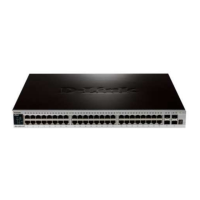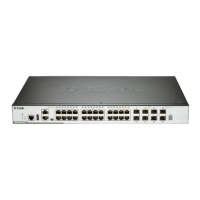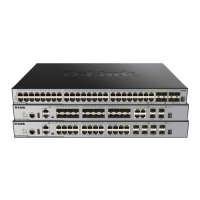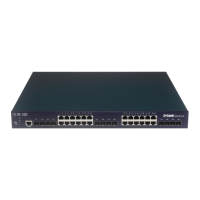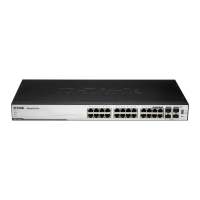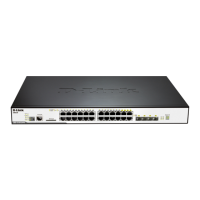PendingRequests
The number of RADIUS Accounting-Request packets sent to this server that have not
yet timed out or received a response. This variable is incremented when an
Accounting-Request is sent and decremented due to receipt of an Accounting-
Response, a timeout or a retransmission.
Timeouts
The number of accounting timeouts to this server. After a timeout the client may retry
to the same server, send to a different server, or give up. A retry to the same server is
counted as a retransmit as well as a timeout. A send to a different server is counted
Click the Clear button to clear the current statistics shown.
IP-MAC-Port Binding (IMPB)
The IP network layer uses a IPv4/IPv6 address. The Ethernet link layer uses a MAC address. Binding these two
address types together allows the transmission of data between the layers. The primary purpose of IP-MAC-port
binding is to restrict the access to a switch to a number of authorized users. Authorized clients can access a
switch’s port by either checking the pair of IP-MAC addresses with the pre-configured database or if DHCP
snooping has been enabled in which case the switch will automatically learn the IP/MAC pairs by snooping DHCP
packets and saving them to the IMPB white list. If an unauthorized user tries to access an IP-MAC binding enabled
port, the system will block the access by dropping its packet. For the xStack
®
DGS-3620 series of switches, active
and inactive entries use the same database. The maximum number of IPv4/IPv6 entries is 510/511. The creation of
authorized users can be manually configured by CLI or Web. The function is port-based, meaning a user can
enable or disable the function on the individual port.
IMPB Global Settings
Users can enable or disable the Trap/Log State and DHCP Snoop state on the Switch. The Trap/Log field will
enable and disable the sending of trap/log messages for IP-MAC-port binding. When enabled, the Switch will send
a trap message to the SNMP agent and the Switch log when an ARP/IP packet is received that doesn’t match the
IP-MAC-port binding configuration set on the Switch.
To view this window, click Security > IP-MAC-Port Binding (IMPB) > IMPB Global Settings as shown below:
Figure 8-26 IMPB Global Settings
The fields that can be configured are described below:
Parameter Description
Trap / Log
Click the radio buttons to enable or disable the sending of trap/log messages for IP-
MAC-port binding. When Enabled, the Switch will send a trap message to the SNMP
agent and the Switch log when an ARP/IP packet is received that doesn’t match the
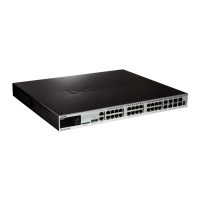
